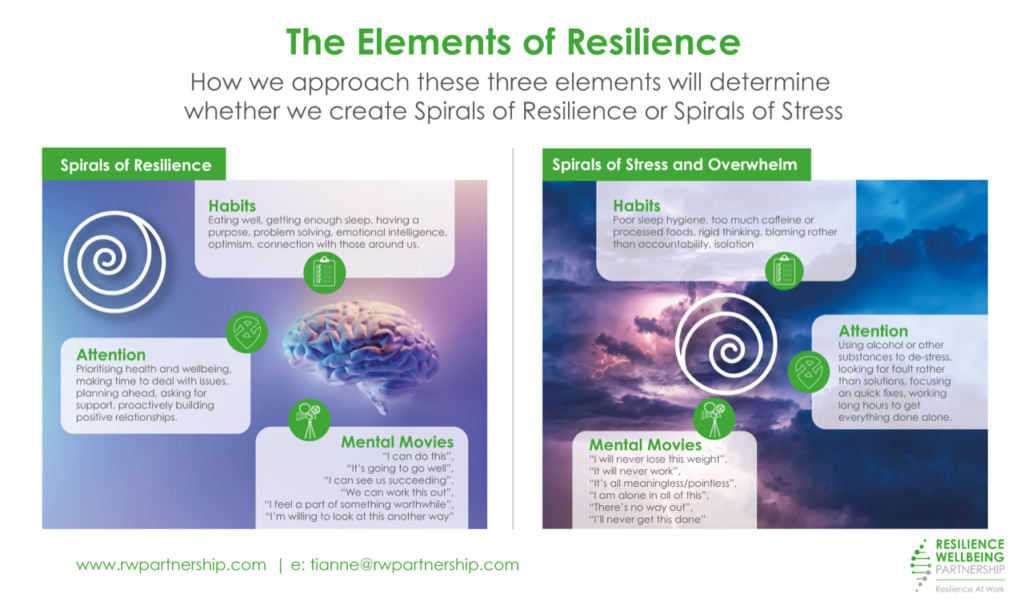How You Can Banish The January Blues

When we learn to focus on what is in our control and let the rest go, we can calm and soothe our nervous system. Here’s how…
Many of us go through our lives playing out movies in our minds of past regrets – things we wished we had or hadn’t done – or future worries – things we are fearful may happen. It’s human nature and perfectly normal to do this, and interestingly, research suggests we do this more in January than at any other time of the year.
With the ‘hangover’ from the festive season – be that overindulgence, overspending, the cold dreary days, or the back to work blues – January is deemed to be the hardest month for many us. So much so, that since 2005, the third Monday in January has been given the grim accolade of ‘Blue Monday’ – even pinpointing the most depressing day of the year.
From the lens of the post-festive season comedown, it’s easy to understand why this may be the case. Three weeks after the holiday season is when ‘reality’ bites: we may have slipped up on those ever hopeful New Year Resolutions, or perhaps the credit card bills have started rolling in. We can begin to worry, to mentally beat ourselves up for not doing better, and to play those fearful mind movies.
Worries v’s Concerns – a quick hack
What happens when we worry is that we trigger the stress response in our brains, and if we worry constantly, this can become an unhealthy for us, emotionally and physically.
One technique we employ to immediately help, is to replace the word ‘Worry’ with ‘Concern’ whenever we talk to ourselves or other people.
Whereas ‘worry’ can feel out of control, ‘concern’ has an entirely different connotation, and therefore provokes a different feeling or response in our minds and bodies. It’s a small shift, but will have huge benefits for your nervous system. Why not try it and see?
What nature can teach us
Animals can also show us how we can destress and regulate our nervous systems. Watch any nature programme where an animal is being hunted by a predator, and you will see their fight or flight response in action. They are alert, their senses become heightened and their adrenaline kicks in to power them up. They run, hide and hopefully.. if they are fast enough, danger is averted.
What we can then observe is, quite quickly, how their system returns to a position of homeostasis: they don’t hang on to the stressful event, and it’s likely they will be out grazing with their pack just moments later! If you have a dog, you will no doubt have observed how – when something stresses them out – they quite literally ‘shake it off’.
We humans possess the precise same fight or flight response that helps us to survive. Sadly, we are the only species on the planet that hangs on to stress and replays what has happened over and over. Or conversely, we spend time ‘worrying’ about what might happen in the future. Just imagine how emotional and physically draining it would be for an animal to do this.
But why is all of this important in January?
In January, we can find ourselves playing out those mental movies even more.
“What if I spent too much over Christmas and I can’t pay the bills?” Or , “I’ve already failed by eating a takeout. I will never shift this excess weight”.
We can be left feeling like we have a glass box around our heads and all of these thoughts are trapped inside. We can feel overwhelmed and exhausted, constantly triggering our stress response.
There is an alternative…
Setting down the overwhelm
The good news is there is so much we can do to shift this. Firstly, it can be helpful to picture removing the glass box of worries and putting it down to the side of us. We aren’t suppressing the feelings or pretending they aren’t there, we are simply putting them to the side so we can take a step back.
And breathe.
By doing this, we are like the animals in their calm state after the hunt is over. Our systems can gently come back into balance.
A really useful exercise – What’s in our control?
An incredibly effective – and tried and tested approach – to calming our nervous system is to write all of our worries onto individual Post-It notes and get them organised. There’s something about the physical act of writing down what’s in our minds that shifts things for us… Moving it through us onto the page, moving it on, moving it out.
Ready to give it a go?
You will need:
- A block of Post-It Notes
- 3 large sheets of paper
- Pen or pencil
- Your journal or a notebook for reflections
Method
- Write. Take some time and get every worry or concern down. It’s really important to physically write these out, instead of typing them onto a screen. Once you’re done, lay them out in front of you.
- Separate. Next, write a heading on each sheet of paper: on the first, put ‘In My Control’, on the second ‘In My Control with Help’ and on the third, ‘Out of My Control’.
- Organise. Then, start by placing everything that you feel is ‘In Your Control’ onto that sheet of paper. Maybe you had a drink after promising yourself you would commit to Dry January, and you’re worrying about how to get back on track. This may be something you feel is in your control to do, so place it on the first sheet. Equally, you may feel it is out of your control, but that with the help of a coach you might be able to re-commit. In this instance, you could place your Post-It on the second sheet.
- Refine. Go through all of your Post-Its and consider what is in your control ‘With Help’. Get those up onto the second sheet.
- Let Go. Then finally, go to what is left. This is your ‘Out of My Control’ pile. Examples might be worries over the economy, the environment, or even partner’s diet choices. If these things are genuinely out of your control, there is nothing you can do. So… let them go. Easier said than done? Consider: “what’s the alternative?” We can spend precious physical and emotional energy playing mental movies of things we can do nothing about. Instead, commit to focusing on sheets one and two, where you can make a difference.
- Commit. It can be helpful to do something with the third sheet, such as ripping it up or burning it (if you can do so safely) to further cement your commitment to letting what is out of your control go. This can feel very liberating.
- Reflect. Note how you feel afterwards. You may want to write in a journal your process and any reflections.
If you would find it helpful, it can also be beneficial to do this exercise with a trusted friend, or even an RWP Resilience Coach, who can help you objectively look at your thought processes and gently challenge you if needed.
Will you be giving this a try?
We’d love to hear how you got on! Drop us a message to [email protected]
MEDICAL DISCLAIMER: The tips and techniques we share here can and will help if you are having a bad day or you are feeling out of sorts. However, in cases of clinical anxiety or depression, please seek medical advice.
What is the meaning of the original Blue Monday?
Blue Monday is a day that has been widely considered to be the most depressing day of the year. After
What day in January is Blue Monday?
The third Monday in January is often considered the worst day of calendar — and afterwards, people start looking forward to spring. Researchers believe this is because it follows the holiday season and winter blues can dampen moods.
When did Blue Monday become a thing?
Blue Monday was created by the late Cliff Arnall in 2005 to describe the third Monday of January – with the condition that this day has to fall during a week in which the weather is cloudy and miserable. The word is now often used to describe this day in particular.
According to the original report from Dr. Cliff Arnall, the lowest point in the British national mood occurs on Blue Monday, and is caused by stress and anxiety. Blue Monday doesn’t have to be about giving up or feeling sorry for yourself, it’s about making changes and taking positive action.
Photo credit
Thanks to Sharon Pittaway on Unsplash for the photo!
#banishtheblues #january2023 # newyear #bluemonday #januaryblues #resilience #wellbeing #mondayblues #resiliencecoach #wellbeingcoach #resilienceatwork





